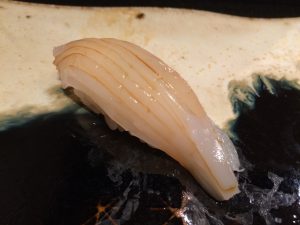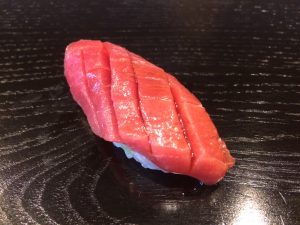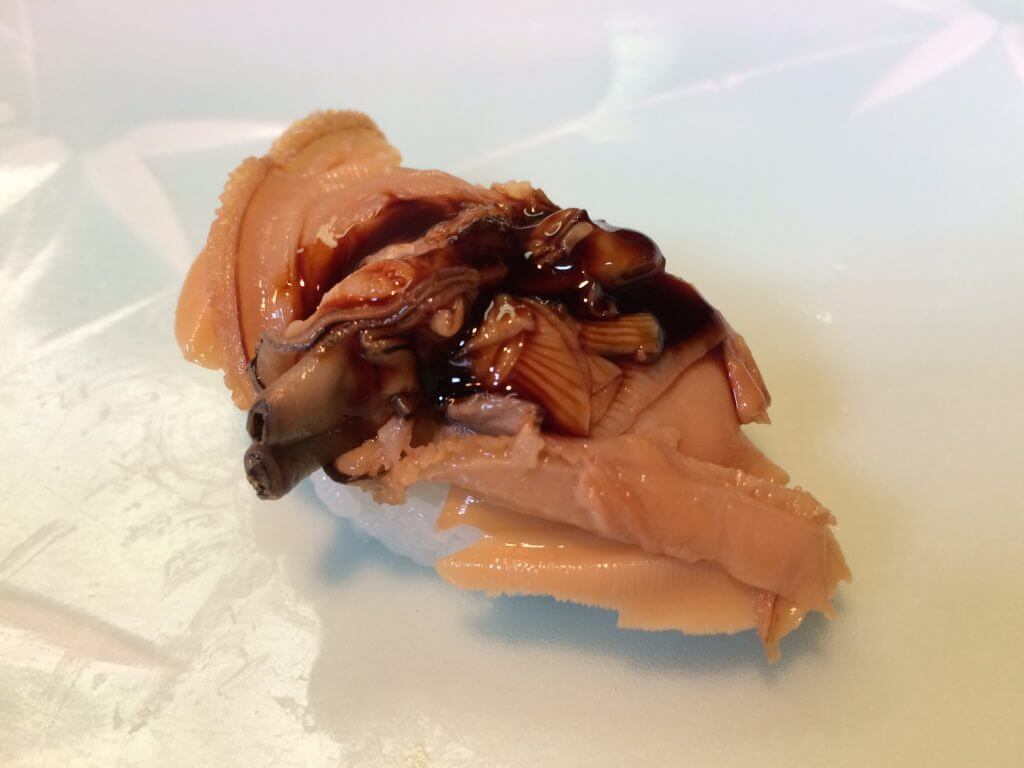There are many different things all over the world that are share the name “sushi”. However, when Japanese people hear this word they think of “nigiri sushi”. Of course outside of Japan, it probably more commonly refers to sushi rolls.
Similarly, the way soy sauce is used also differs greatly between people in Japan and those in other countries. The soy sauced used for nigiri sushi is not used to add salty flavor to the sushi. The reason it’s used is to subdue the fishy odor of the fish and to add the many amino acids contained in soy sauce to nigiri sushi, which brings out the umami synergistic effects. Think of it more like an important background role to the sushi that isn’t meant to stand out. Meanwhile, since sushi rolls and other sushi dishes overseas are generally eaten after being cooled, the flavor is subdued, leading to using large amounts of soy sauce.
There is also a big difference in the concept of sushi sauce. In Japan, there is no such word as “sushi sauce”. Neither chefs nor the general population has heard this term. However, the term is easy to imagine what it would be, so hearing the word “sushi sauce” would probably lead Japanese people to assume it meant nikiri shoyu or nitsume, which are used in nigiri sushi. Also, soy sauce, or “shoyu” as it’s called in Japanese, is not considered to be a type of “sauce” in Japan. But what about in other countries? Sushi sauce has a distinctive, assertive flavor and is added to bring out multiple layers of flavor. There are also many types of sushi sauce such as sriracha sauce, spicy mayo, mango sauce, ponzu sauce, tonkatsu sauce, eel sauce, tamari sauce, teriyaki sauce, dynamite sauce and others. They each play an important role in bringing out the flavors of sushi rolls that otherwise wouldn’t be apparent.
In other words, as the definition of sushi definition changes across borders, the definition of sushi sauce changes too. However, what both sushi sauce overseas and Shoyu in Japan have in common is that they complement the sushi they are used for.
Now we would like to explain a bit about the Shoyu used in nigiri sushi.
Edo style sushi was created during the Edo period in Japan (1804-1830). The expansion of the soy sauce culture of the Edo area (currently Tokyo) had a big influence on the creation of Edo style sushi. In a time when refrigeration and other technology had not yet been developed, soy sauce played an important role not only in taste, but also in preservation. A surprising number of tasks in the Edo style utilize the scientific effects of soy sauce.
 First of all, lightly applying just a small amount of Nikiri shoyu (sushi sauce) on the sushi topping, brings out its flavor and creates a glaze. To put it scientifically, this a clever use of the odor eliminating effects of soy sauce, eliminating the raw odor.
First of all, lightly applying just a small amount of Nikiri shoyu (sushi sauce) on the sushi topping, brings out its flavor and creates a glaze. To put it scientifically, this a clever use of the odor eliminating effects of soy sauce, eliminating the raw odor.
 Also, long ago zuke (soaking in soy sauce) was also used for fish other than tuna. This was a way to utilize the bacteriostatic effects of soy sauce, which stop the growth of Escherichia coli (E. coli).
Also, long ago zuke (soaking in soy sauce) was also used for fish other than tuna. This was a way to utilize the bacteriostatic effects of soy sauce, which stop the growth of Escherichia coli (E. coli).
 Tsume (sushi sauce) represents the thermal effects of soy sauce. By adding soy sauce, mirin and sugar then boiling down, the amino acids in the soy sauce and the sugar react and the goal is to create a delicious glaze and a nice scent that stimulates the appetite.
Tsume (sushi sauce) represents the thermal effects of soy sauce. By adding soy sauce, mirin and sugar then boiling down, the amino acids in the soy sauce and the sugar react and the goal is to create a delicious glaze and a nice scent that stimulates the appetite.
Adding a small amount of soy sauce when making rolled egg omelets has the effect of enhancing and bringing out the flavor and sweetness of the ingredients.
Soy sauce is generally overshadowed by the sushi topping and vinegar rice, but soy sauce plays an important role in bringing out and enhancing the delicious taste of the sushi.
Related contents: SOY SAUCE FOR SUSHI
[sc_apply url=”https://sushiuniversity.jp/apply/”]
We hope this information will be helpful.

Revision date: June 19, 2020
Share this article